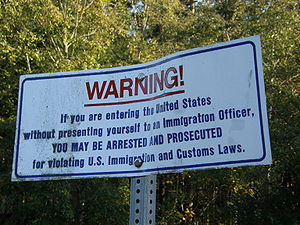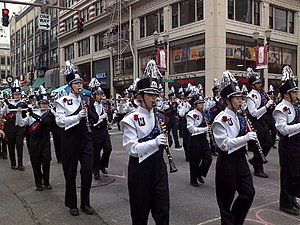Download SVG file
License term: Creative Commons Public License 3.0 by-nc-sa.

Cat out of the bag by Sarah Morrigan is licensed under a Creative Commons Attribution-NonCommercial-ShareAlike 3.0 Unported License.
a blog on art, designs and graphics.

 Image via WikipediaIn Portland, Oregon, thousands of un-housed individuals are constantly persecuted and attacked by local police, rent-a-cops hired by the businesses, and by random thugs, for the crime of attempting to survive. Especially during the weeks preceding the Portland Rose Festival, "the official festival of Portland," the police is busy driving camps out of the Tom McCall Waterfront Park, under the bridges and other prominent downtown locations, utilizing the city ordinance prohibiting camping on public right-of-way.
Image via WikipediaIn Portland, Oregon, thousands of un-housed individuals are constantly persecuted and attacked by local police, rent-a-cops hired by the businesses, and by random thugs, for the crime of attempting to survive. Especially during the weeks preceding the Portland Rose Festival, "the official festival of Portland," the police is busy driving camps out of the Tom McCall Waterfront Park, under the bridges and other prominent downtown locations, utilizing the city ordinance prohibiting camping on public right-of-way. Image via Wikipedia
Image via Wikipedia Manchuria was home to various Tungusic ethnic groups, whose languages were more in common with Mongolian, Japanese and Korean, and with them shared a long tradition of shamanism. Like the Mongols, at one point the Manchus became powerful and took over China, ruling over the Han and other ethnic groups for centuries.
Manchuria was home to various Tungusic ethnic groups, whose languages were more in common with Mongolian, Japanese and Korean, and with them shared a long tradition of shamanism. Like the Mongols, at one point the Manchus became powerful and took over China, ruling over the Han and other ethnic groups for centuries. Image via Wikipedia
Image via Wikipedia |
| Somewhere between the yellow sign (in Tsawwassen, BC) and the street sign (Roosevelt Way, Point Roberts, WA) is the U.S.-Canada border. |
 |
| Look at the ditch on the right. It is a border. (0 Avenue, Surrey, B.C., just a few metres east of the Smugglers' Inn, Blaine, Wash.) |
 Image via Wikipedia
Image via Wikipedia Image via WikipediaThis post has been merged with http://iriscatartanddesigns.blogspot.com/2011/06/diplomatic-nightmare-at-pioneer.html as of Sunday, June 5.
Image via WikipediaThis post has been merged with http://iriscatartanddesigns.blogspot.com/2011/06/diplomatic-nightmare-at-pioneer.html as of Sunday, June 5. Image by violet sugar via FlickrYesterday, Portland opened the gates of the brand-new Bud Clark Commons, a multipurpose building that occupies a half-block area between the main post office and the Greyhound station that now houses a 150-unit apartment complex, "Doreen's Place" men's shelter, and the new Transition Projects (TPI) day resource access and homeless control facility. The idea came during the Tom Potter era when the Multnomah County circuit court ruled that the sit-lie ordinance would be unconstitutional, and simultaneously the city was under fire from the local business community for its seeming molly-coddling of the vagrants who were taking up too much sidewalk spaces and bothering shoppers, convention delegates, and tourists. For the past several years, the Julia West House, a small building owned by First Presbyterian Church in West End district, served as an interim day access center until the completion of the Bud Clark Commons.
Image by violet sugar via FlickrYesterday, Portland opened the gates of the brand-new Bud Clark Commons, a multipurpose building that occupies a half-block area between the main post office and the Greyhound station that now houses a 150-unit apartment complex, "Doreen's Place" men's shelter, and the new Transition Projects (TPI) day resource access and homeless control facility. The idea came during the Tom Potter era when the Multnomah County circuit court ruled that the sit-lie ordinance would be unconstitutional, and simultaneously the city was under fire from the local business community for its seeming molly-coddling of the vagrants who were taking up too much sidewalk spaces and bothering shoppers, convention delegates, and tourists. For the past several years, the Julia West House, a small building owned by First Presbyterian Church in West End district, served as an interim day access center until the completion of the Bud Clark Commons. Image via WikipediaAlmost every world-class city has its city square, and Portland is no exception. Presently, the Portland Rose Festival -- the "official festival of Portland, Oregon" is under way and is drawing tourists from everywhere. So is the Pioneer Courthouse Square, "Portland's living room."
Image via WikipediaAlmost every world-class city has its city square, and Portland is no exception. Presently, the Portland Rose Festival -- the "official festival of Portland, Oregon" is under way and is drawing tourists from everywhere. So is the Pioneer Courthouse Square, "Portland's living room."
- Follow Us on Twitter!
- "Join Us on Facebook!
- RSS
Contact